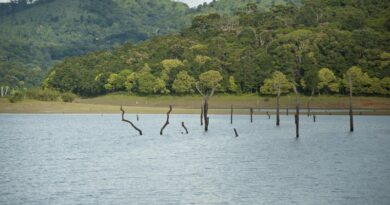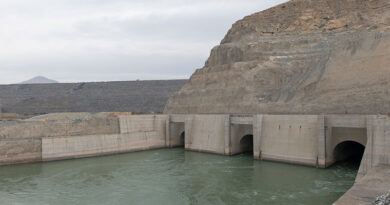NGT asks top officials in Uttar Pradesh, Uttarakhand, Bihar, West Bengal to monitor Ganga rejuvenation
Alarmed over pollutants still being discharged into the Ganga despite several directions of various courts, the National Green Tribunal (NGT) has directed chief secretaries of Uttar Pradesh, Uttarakhand, Bihar and West Bengal to periodically monitor the rejuvenation of the river even as the Centre is looking to use ‘forestry interventions’ as one of the major tools to rejuvenate 13 other major rivers across the country based on the lines of the ongoing programme for Ganga.
The green tribunal said a holistic approach for rejuvenation of the Ganga was required and it was a pity that even after constant monitoring by the Supreme Court for 34 years and by it for six years, besides 46 years after enactment of the Water Act, which makes discharge of pollutants in water bodies a criminal offence, pollutants continue to be discharged in the “most holy river.”
“We also feel that there should be periodic joint meetings of chief secretaries of the states concerned to consider vital issues like pooling of human resources and sharing best practices for rejuvenation of Ganga, particularly preventing discharge of sewage and other pollutants therein directly or in its tributaries or drains connected thereto”, a bench headed by NGT chairman Adarsh Kumar Goel said.
The NGT was of the view that a holistic approach was needed for treating the Ganga River as a single entity and ecosystem, which requires pooling of fiscal resources by different stakeholders. The project of making Ganga pollution-free needs serious attention of all the states at highest levels, it added.
“Pollution-free environment is the Constitutional right of every citizen and Constitutional obligation of states. To this extent, the states are certainly failing in discharging their Constitutional obligation. This unsatisfactory state of affairs calls for rigorous planning action at the highest level monitoring for meaning enforcement of the rule of law for protection of environment and public health and also rejuvenation of Ganga River,” the bench said.
The NGT had constituted a Central Monitoring Committee to prepare and enforce a national plan to make over 350 river stretches in the country pollution-free. It had also admonished the National Mission for Clean Ganga (NMCG) over its failure to control pollutants entering the Ganga River and other water bodies.
Meanwhile, the Centre is exploring an option to grow forests along both sides of 13 major rivers – Beas, Chenab, Jhelum, Ravi, Sutlej, Luni, Yamuna, Narmada, Godavari, Kaveri, Krishna, Brahmaputra and Mahanadi – to increase groundwater recharge and reduce erosion.
Experts said forests have capacity to hold water and discharge it slowly into the rivers and form an important component of plans to ensure uninterrupted flow of water in the rivers and improving their overall hydrological cycle.
Speaking at a recent state forests ministers’ meeting, Union Environment Minister Prakash Javadekar said his ministry has assigned a technical study to Indian Council of Forestry research and Education (ICFRE), Dehradun, to assess the river landscape and prepare a detailed project report (DPR) for forestry interventions required for rejuvenation of the 13 major rivers.
For the Ganga, the Centre, through the National Mission for Clean Ganga (NMCG), had initiated “forestry interventions” programme in 2016 for five years with allocation of Rs 2300 crore. Over 1.13 lakh hectares of land has been earmarked along the five main Ganga basin states – Uttarakhand, Uttar Pradesh, Bihar, Jharkhand and West Bengal – for afforestation.



